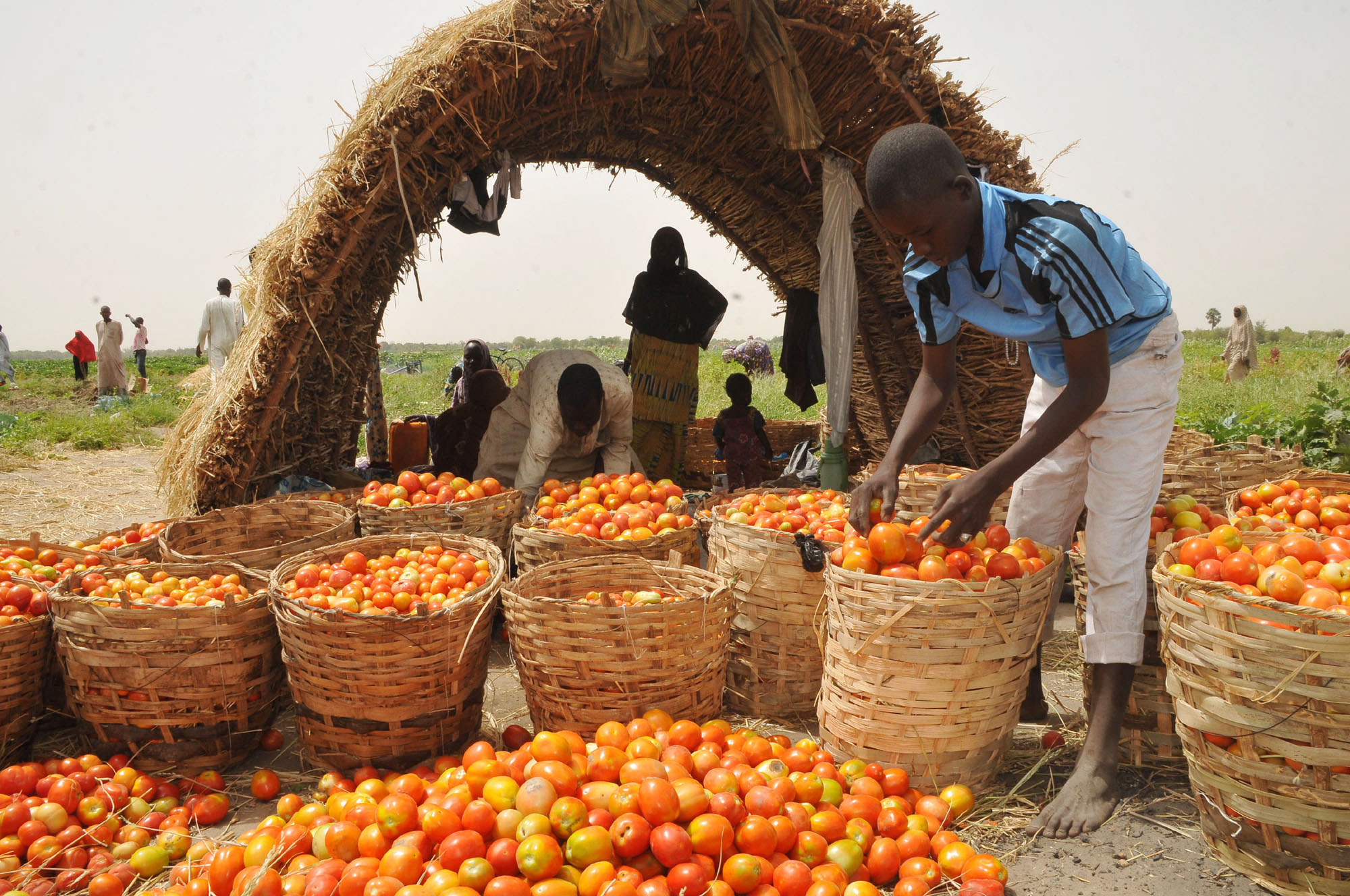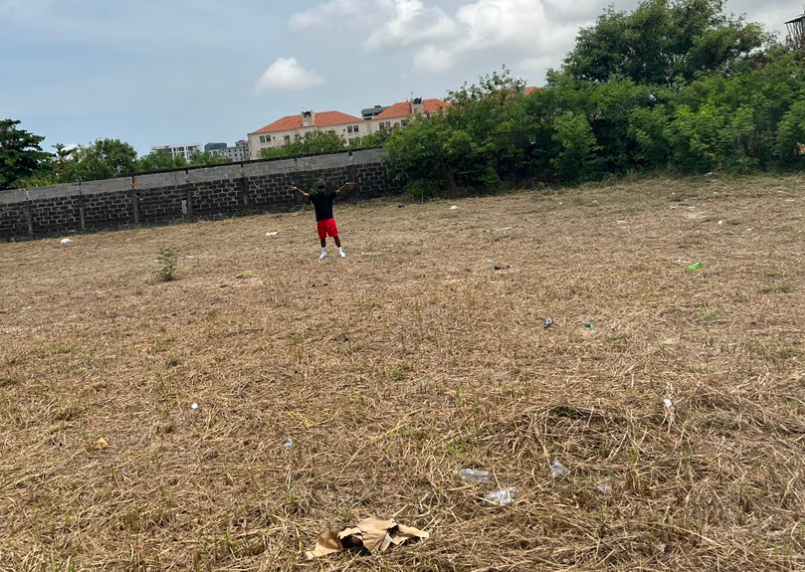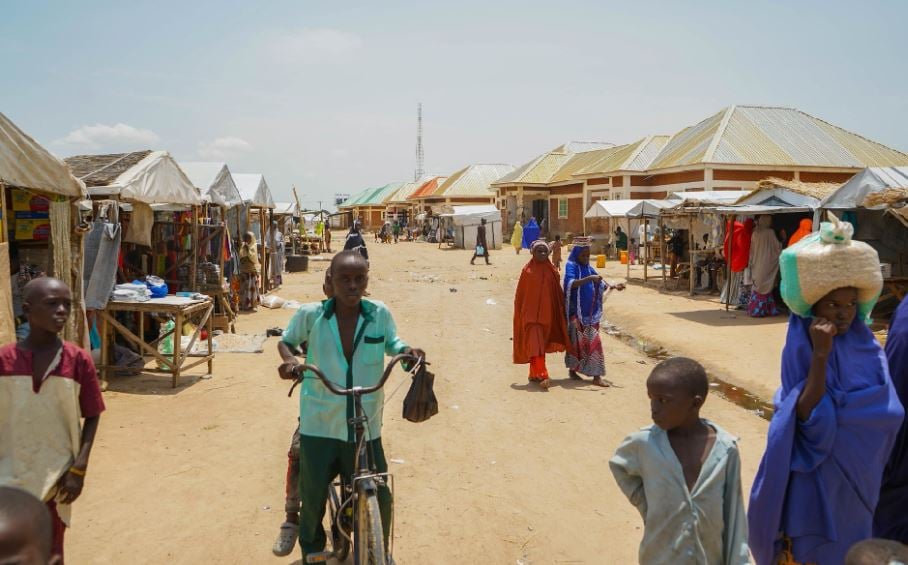BY ODUNOLA OLADEJI
The Yorubas will say, Oò șá igi lógbé, oò ta ògùrò lófà, o dé idí ope, o ngbé’nu s’ókè, sé òfé ló máa nro ni (Literarily translated, “you didn’t cut through the palm tree, nor shot the raffia with an arrow; you got to the palm and open mouth; does the wine drip freely? Simply put, if you don’t do something, you don’t get anything.
In Nigeria, and likely for many countries in Sub-Saharan Africa, agriculture is clothed in rhetoric, fashioned in the order of old, and beautified in the antiquity of a lost-gone legacy— the mainstay of the economy. Governments, in a condescending yet romanticised way, are still chanting diversification at the slightest opportunity. It has become the go-to selling point for manifestos— mumble those lines during campaigns and elections, and your ticket to office is secured.
What used to be an employer for many now sails the path of redundancy. In its heyday, agriculture constituted over 60% of total employment. However, today, it’s a far cry from 35%, despite the astronomical population growth rate. Without mincing words, agriculture is not synonymous with penury; once, wealth and farmers used to collocate. For a sector that used to be the bane of the country’s economy and enjoyed significant patronage and participation—marked by massive subsistence practices—the regression over the years as well as the colossal disinterest we have witnessed in recent years is not unprecedented.
Advertisement
Nearly all named challenges hampering agricultural development in Nigeria that I learned about in elementary school continue to persist, if not worsened by a constellation of factors. We have, among other factors, neglect, the climate crisis, and protracted farmer-herder conflict. Name it, mechanisation, land tenure, agricultural inputs, credit facilities, extension services, feeder roads, and postharvest losses, amongst others. In my close to three decades of existence, the story remained unchanged, and all the so-called ‘panacea’ quoted to remedy the situation are still repeatedly taught today.
On a contrasting note, a heroic mention goes to the few individuals, particularly youths, who are undaunted by the limitations but motivated by the plethora of opportunities in the sector. They bravely take the bull by the horns, displaying a passion for the age-long profession, most of whom may not have even studied agriculture as a discipline. While this is noteworthy, they represent only a small fraction of the vast expanse of the 70.8 million hectares of endowed agricultural land, with a reported 36.9 million hectares of arable land as of 2021. This becomes even more significant when we acknowledge the daunting task of feeding the ever-growing populace already counting above 200 million and, more importantly, a more serious quagmire of double-digit food inflation, which soared to a staggering 32% as of November 2023.
Until now, the burden of food production in the country has largely rested on the shoulders of subsistence farmers, acknowledged for contributing nothing short of 80%. It is crucial to note that this crop of farmers are predominantly aged individuals whose morale is diminishing, or rather, ceding their passion for survival. The increasing difficulty in production, fuelled by rampant insecurity, has forced many to abandon their land, coupled with the inability to raise capital for the next planting season.
Where are the younger generation of farmers? A pertinent question indeed. They are not lacking in numbers but are deterred by limited support and obsolescence.
Advertisement
The dignity of a sector that holds the key to another day on earth continues to dwindle. Perhaps the roots of this issue can also be traced to tertiary institutions, where agriculture is systemically considered a dumping ground for those rejected by the acclaimed ‘professional’ courses’. While this adds to the numbers, it raises the question of how these numbers have translated to tangible impact and long-term participation in agriculture.
How many graduates of agriculture or its cognate discipline end up practising agriculture? Just looking around my circle alone, the big guys I know who currently practice modern agriculture are graduates of sociology, biochemistry, microbiology, computer science, and business administration. While the narrative of government failure in making deliberate and strategic investments in agriculture continues to fester, the citadels of learning have also faltered in making agriculture appealing to the called and the chosen, who could potentially revolutionise agriculture. It is almost impossible to internalise that five-year experience and still develop a genuine passion for the trade.
What do I mean? On the first day of my penultimate year as a student of the faculty of agriculture, in what was supposed to be a pep talk for practical year students on what the year was going to constitute, the practicality of the practice was presented to us. And I can’t forget the snide remark that was injected into the conversation, “Tomorrow when you look back, you will thank us”. Thinking about it now, what is worth the gratitude? Let me walk you through the experience that is deserving of gratitude.” But before I do that, allow me to slip in a caveat that my account and experience are not absolute; nonetheless, the differentials in precision of what is tenable is just a tiny margin.
Typically, the ensemble of a farmer during this practical year is allured by green pinafores, protective boots, gloves, wielding a watering can, hoe, and cutlass. Ladies and gentlemen, part with blisters of various sizes and shapes from clearing bushes on allotted plots. If you are born with a silver spoon and stainless body, a few bucks can delegate the job; just send your money on errands. The other interesting side to this is that loyal boyfriends or suitors within the same faculty cover a few extra plots in addition to theirs. The evening session is when the job is done, and when interfaculty lovebirds and mercenaries pay their dues.
Advertisement
Setting humour aside, if there is anything that the system exemplifies, it is the untold hardship, lack of innovativeness, and sheer mediocrity that have reduced the experience to primitive farming practices and animal husbandry. If you once saw the stars and the moon in agriculture in previous years, the practical year might be the one where you cut ties with such lofty aspirations. Could there be a more plausible explanation for why graduates of agriculture become demotivated and significant stakeholders in the business of things may not hold a degree in agriculture?
Untouched by the advancements and innovations witnessed in other fields, our daily routines were reminiscent of an outdated agricultural practice. This created a lacuna between what the contemporary agriculture landscape demanded and what we were being exposed to. It has been nearly half a decade since I graduated, and I can’t comprehend nor have I seen the need to understand how hoe and cutlass are today and the future of agriculture, maybe yesterday, which is quite fine. As someone rightly put it, these tools are arguably better suited for a museum than the hands of a 4th-year undergraduate student of agriculture.
In my recent years working on a project with smallholder farmers in some remote regions of Nigeria, their demand has been clear—provide us with a tractor. This is supposedly the crop of farmers that the comity of lettered will attribute to hoes and cutlasses in a yet misleading definition of smallholder farmers. If it’s now demode to the acclaimed ‘uneducated’ farmers, what is a 4th-year undergraduate student of agriculture doing with it?
Quite shockingly, despite decades of agricultural practices, not the very least its economic significance to the nation, the tractor, a fundamental tool in modern agriculture, is still objet d’art for most farmers. And we wonder why hunger and food inflation are prevalent in recent times and perhaps our struggling economy. Agriculture does two things for an economy— sustains your people within and secures your forex without. It was no distant history that groundnut was the pride of northern Nigeria, the southwestern region was the cradle of quality cocoa beans, and the then eastern region took pride in palm oil. However, the current situation raises concerns. If the story we were told of Malaysia coming to Nigeria to acquire oil palm seeds were true, then we need to call a solemn assembly.
Advertisement
How have we progressed as an agrarian economy with minimal advancements in agriculture for decades? And how much more can we go, operating the same modus operandi? At least, the precarity of present times and recent events should awaken us from our slumber. In quick succession, the world experienced the COVID-19 pandemic and barely recovered when the Ukraine-Russia war started. We had barely taken a grip; we saw another war in Sudan, and while the world was still taking sides, the Israel-Palestine crisis escalated. Inadvertently, all these have had an incredible impact on the global food supply chain. In no small measure, our already fragile economy also took a shot. We can also tell it in the sky-scaling rate of food inflation. If we continue like this, can we weather another catastrophe?
I have come across high-profile analysts relishing hot takes that Nigeria’s challenge is not production but value addition. However, if we have an honest conversation: have we truly reached an optimal production level to achieve food self-sufficiency? Anecdotally, in my few road trips across major European countries, immediately we stepped outside main habitations, one could travel hours with the thrills of finely lined plantations and massive hectarage under cultivation. And if my memory serves me well, I have only seen glimpses of such farming corridors en route to Niger State and on my way to Jos, specifically in the southern part of Kaduna state. In contrast, it is saddening to see verdant lands across the Western-Eastern stretch colonised vastly by bushes with scanty farming corridors.
Advertisement
Which way forward, then? First of all, this is not some messianic take as some of what will be mentioned is common knowledge. The diversification jamboree from oil must cease, and rather, a genuine commitment towards the renaissance of our agricultural pride must take centre stage. To rejig the sector, the political will must be there to address head-on, existential grandstanding militating against the growth and development of the sector, particularly insecurity—notably the protracted farmers-herders crisis. A significant number of farmers have been dislodged from their farms as a result of constant friction with herdsmen, who not only destroy their efforts but also maim or, in the worst scenarios, kill farmers.
The dailies are filled with news of such horrific encounters. And if indeed the purpose of transhumance is essentially grazing and no other motives to it, then ranching and raising pastures should solve this debacle. The government should revisit the ranching provisions of the land use policy or otherwise earmark some hectarage for ranching. In addition, this portion of land should be used to raise pastures. I, for one, advocate that herdsmen, being essentially farmers dealing in livestock, should engage in complementary pasture-raising activities. After all, I have been to some farming communities where land cultivated by sedentary herdsmen lushes gleefully owing to derived nutrients from cattle dung.
That said, any flagrant disregard for such arrangements should be deemed trespass, and punitive measures must be taken against the culprit. Establishing a law requiring all herdsmen and farmers to have unique IDs could facilitate accountability. Once this seemingly perennial problem is put to rest, we can squarely address low agricultural production and productivity.
Advertisement
Any forward-thinking government with a business mindset would actively engage in bilateral agreements with countries leading in the manufacture of tractors and other major machinery. This goes beyond merely supervising the inflow of machinery; it involves collaboration for knowledge exchange and tapping into employment opportunities throughout the production and supply chain. With a growing automobile industry and already established assembly plants, we have the potential to integrate into the tractor production line. However, the ultimate goal should be to perfect our ability to produce modular machinery specifically tailored to our unique landscape and agricultural needs.
But before that, as a matter of urgency, every local government area (LGA) with agrarian potential in the country should have a minimum of four tractors serving it. In total, there are 774 LGAs across the country, and it is safe to say that not all of them have agrarian potential. But let’s say a modest 500 of the 774 LGA have agricultural potential, that is about 2,000 tractors, without forgetting its coupling elements like plough, harrow, and planter. Albeit, with increased sophistication in mechanisation, we have hand-driven implements like planters and sprayers that can be made accessible and affordable to farmers. These can set in motion the redemption process for our agricultural heritage.
Advertisement
To address the lack of motivation and underwhelming participation of youths in agriculture, a proactive government will ensure the overhauling of the current agricultural syllabus, exhuming all mediocrity, both in appearance and form. Courses that resonate with contemporary realities and epitomise 21st-century state-of-the-art should take precedence. For example, modern agriculture is talking about precision agriculture, vertical farming, urban farming, and hydroponics, why should it be different with us?
Moreover, we need to move from the mere culture of farming to the business side of agriculture, which today is known as agribusiness. Perhaps we will do things differently. Highlighting the low-hanging fruits in the agricultural value chain could spark interest and inspire students to spot the goldmine in agriculture. The interesting part is that the resourcefulness of the tutors we have got is unquestionable, or at best, upskillable. Furthermore, educational institutions need to foster cross-fertilising ideas and innovations with the real world. Interdisciplinary collaborations and partnerships, particularly with the faculty of engineering and technology, are essential to optimising numerous processes, operations, and practices in our current agricultural landscape. These are also golden opportunities for our burgeoning tech ecosystem.
Every faculty of agriculture should have their laboratory—extensive hectarage allocated for practical year purposes. This laboratory should have its own designated tractors, other implements, and decent (for emphasis) accommodations for students with power supply and internet access. If the national broadband infrastructure falls short in serving remote farming communities, the advent of Starlink makes internet access a reality. It is crucial to captivate students’ minds and pique their imaginations with the beauty and art of cultivation, especially when done on a large scale. They should occupy the position of a nurturer rather than a labourer. Ideally, each student should be assigned one acre or hectare to nurture after an appropriate (mechanized) land-clearing mechanism. Imagine working on a farm with multiple other acres or hectares cultivated by your colleagues, thus fostering a sense of collective accomplishment and fulfilment.
Today, the vast diaspora population, particularly those with a strong affinity for cultural consumption, represents an untapped market. This incredible market is currently being leveraged by Asians. Some time ago, I walked into an Asian market somewhere in southern Italy and came out with yam flour branded by Ali Baba and processed Ewedu called chopped molokhia from Egypt. If our export is to serve the Nigerian diaspora alone, we will be doing some substantial million-dollar turnover. The other time, I was in a vegetable processing company in Germany where dried onions and other vegetables were imported from Asia and repackaged into different granular sizes with shipment heading for a company in Ivory Coast. Imagine my bewilderment. These are potential employment opportunities for our teeming youth population, which is largely untapped. A prospective student in food science and nutrition should not grimace in disdain when thinking about what the future holds. Most of these courses, often spitefully condescended upon, are potential lubrication for our socio-economic triumph.
In conclusion, Nigeria may hold onto its oil, but outsourcing the basic element for survival—food—to the preponderance of what comes through its borders is preposterous and a great disservice to its vast 200 million populace. And if anything meaningful will be achieved, it definitely can’t be business as usual anymore. I have indicted the government in all of this simply because the government is responsible for creating an enabling environment for growth and development, which is currently below par.
Nigerian farmers are one of the most resilient farmers in the world; they have little to zero insurance against loss, are constrained capital-wise, and subsidies often favour political farmers. Most real farmers have heard more about government interventions than they have seen or received. However, if we will reap in abundance and find our foot in the elegance of our agricultural heritage, build our food sovereignty, and combat food insecurity and inflation, then we have to evolve beyond assembling rice pyramids and doling out palliatives to both structural and systemic reforms in the agricultural sector. It is an investment that yields a dividend; talk is cheap.
Oladeji is a doctoral researcher at GSSI, Italy. He can be reached via [email protected].
Views expressed by contributors are strictly personal and not of TheCable.
Add a comment






